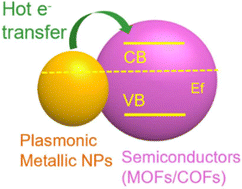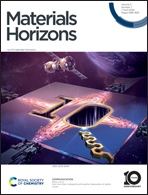Enhanced photocatalysis of metal/covalent organic frameworks by plasmonic nanoparticles and homo/hetero-junctions
Abstract
Metal–organic frameworks (MOFs) and covalent organic frameworks (COFs) have garnered attention in photocatalysis due to their unique features including extensive surface area, adjustable pores, and the ability to incorporate various functional groups. However, challenges such as limited visible light absorption and rapid electron–hole recombination often hinder their photocatalytic efficiency. Recent developments have introduced plasmonic nanoparticles (NPs) and junctions to enhance the photocatalytic performance of MOFs/COFs. This paper provides a comprehensive review of recent advancements in MOF/COF-based photocatalysts improved by integration of plasmonic NPs and junctions. We begin by examining the utilization of plasmonic NPs, known for absorbing longer-wavelength light compared to typical MOFs/COFs. These NPs exhibit localized surface plasmon resonance (LSPR) when excited, effectively enhancing the photocatalytic performance of MOFs/COFs. Moreover, we discuss the role of homo/hetero-junctions in facilitating charge separation, further boosting the photocatalytic performance of MOFs/COFs. The mechanisms behind the improved photocatalytic performance of these composites are discussed, along with an assessment of challenges and opportunities in the field, guiding future research directions.

- This article is part of the themed collections: Recent Review Articles and #MyFirstMH


 Please wait while we load your content...
Please wait while we load your content...